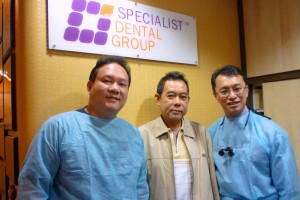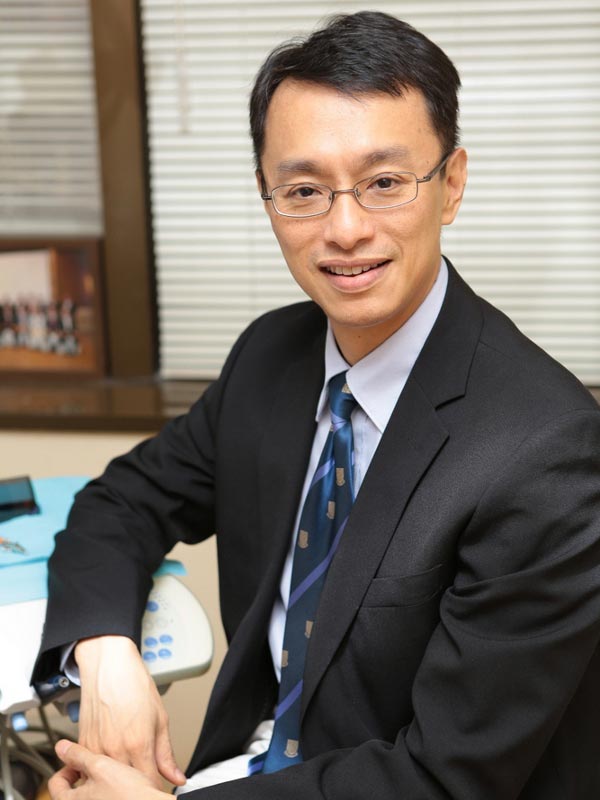 Specialist Dental Group has launched an on-going series of blog posts by our individual dental specialists. All views provided are the dentist’s own opinions and are posted on this blog as part of our on-going efforts to educate the public about dental issues and other matters of interest relating to dentistry and healthcare.
Specialist Dental Group has launched an on-going series of blog posts by our individual dental specialists. All views provided are the dentist’s own opinions and are posted on this blog as part of our on-going efforts to educate the public about dental issues and other matters of interest relating to dentistry and healthcare.
Last week’s June 1 reminded me of the encounter I had with a man in 2010. It was a nice and sunny day in tropical Singapore. Little did I know that this day would turn out to be a very special one: It was the day I met with Mr. Santoso.
I remembered seeing him from far down the corridor that day and he looked a little frail. His head hung down, a piece of gauze stuck out at his neck and he walked rather slowly. I thought that this older gentleman could need some help from a geriatrician (a specialist who helps manage medical care for older people). So, you can imagine my surprise when Mr. Santoso showed up at our clinic instead. His family told us that he had undergone a jaw tumor surgery about half a year ago in a neighbouring country and he had not been able to eat, drink and talk properly. He had also been pretty much home bound since his treatment. He was told that nothing much could be done to improve his condition. A metal plate visible in his mouth and pus was constantly discharged from his neck. I thought he was in his 70s but in fact, he had just barely passed his 50th birthday!
As usual, we did a thorough clinical examination and we took a digital computer radiograph of his mouth. We noticed that approximately 70% of his lower jaw was missing as a result of the tumour surgery. It was clear that his surgery had successfully eradicated the tumor and that he would not suffer a relapse. However, the resulting surgical defect would slowly consume him as he wasn’t able to talk and eat normally. As a matter of fact, he has been out of his managerial position since his surgery.
After some in-depth discussions both with him and internally, with reconstructive surgeons, we embarked on a plan to reconstruct his lower jaw using a bone from the lower leg (fibula free-flap) and dental implants (early/immediate loading, early rehabilitation). To cut the clinical story short, our team managed to successfully reconstruct his lower jaw using his own leg bone and dental implants were then placed into the newly constructed jaw. He is now a totally new man.
To achieve this for him, here is what the reconstructive and oral surgeons did:
(1) We used a leg bone to replace his missing lower jaw defect and successfully connected the blood supply during surgery to ensure the vitality of the new jaw bone.
(2) It was crucial to have the bone shaped exactly the same as his previous lower jaw so that it perfectly matched his upper jaw
(3) The placement of dental implants anchored his new teeth with early rehabilitation
(4) Last but not the least, we preserved his normal leg function in spite of the bone removal from his lower leg
Years ago, when I first started treating cases like Mr. Santoso, the treatment may take up to a year to complete. In his case, in a fraction of the time, we managed to get him up and running again (literally).
Mr. Santoso lives an active life today, he works like he used to, travels to Singapore with his family from time to time, walks up and down Orchard road to shop, enjoys good food and swims like fish.
Our team saw him a few weeks ago in his third year follow up examination and he was in good spirits. One good problem I noted was that he had to get new clothes – he had been gaining some healthy weight. He made our day.
* We would like to thank Mr. Santoso who has given permission to share his case study so that others who have a similar condition would know that it is still possible for them to regain their quality of life after such a major surgery.
Dr. Ansgar C. Cheng is a Dental Specialist in Prosthodontics (Teeth Replacement) with Specialist Dental Group. He is also an Adjunct Associate Professor with the National University of Singapore. He has a special interest in dental implants, cosmetic dentistry and treatment of medically compromised patients, including cancer patients.






